Large Hadron Collider beauty (LHCb) in CERN detected “never-seen-before” particles
The newest two particles were added to the baryon family. Known under names Xi_b’- and Xi_b*-, they have been detected by Large Hadron Collider (LHC) at CERN. LHC is the largest particle accelerator in the world. The new particles are result of the international LHCb collaboration.
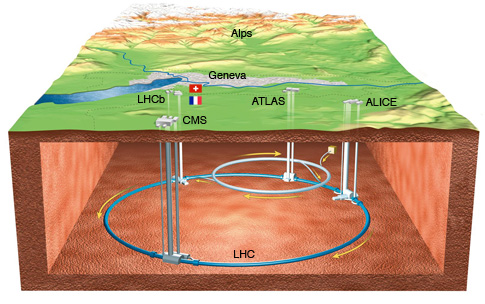
Underground view of LHC experiments, source
Baryons are particles, which are created from three subatomic particles called quarks. They are bound together by strong force and the baryons are born. Protons and neutrons are also baryons but these are combined with electrons in order to make everything on the periodic table. The quarks that created them are not even the same type. Each of the new particles contains one beauty (b), one strange (s), and one down (d) quark.
The newest particles are more than six times as massive as proton. This is due to their b quarks which are heavyweight and their angular momentum. Angular momentum is also known as spin. The spins in the Xi_b’ of the two lighter quarks point in the opposite direction to the b quark and in the Xi_b*- the spins are aligned. This difference makes the Xi_b*- a little bit heavier.
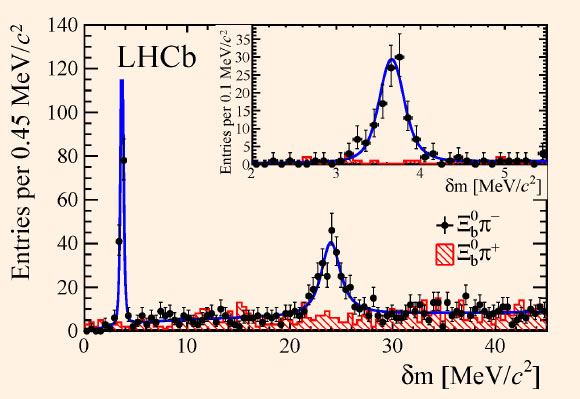
LHCb result shows strong evidence of the existence of two new particles the Ξb’- (first peak) and Ξb*- (second peak), with the high-level confidence of 10 sigma. Source: LHCb experiment / CERN.
Matthew Charles of the CNRS’s LPNHE Laboratory at Paris VI University said in a CERN statement: “Nature was kind and gave us two particles for the price of one. The he Xi_b’– is very close in mass to the sum of its decay products: if it had been just a little lighter, we wouldn’t have seen it at all using the decay signature that we were looking for.”
Steven Blusk, who is a part of a team of researchers from Syracuse University in New York working at CERN said: “This is a very exciting result. Thanks to LHCb’s excellent hadron identification, which is unique among the LHC experiments, we were able to separate a very clean and strong signal from the background.”
[sc:ad-text]
Even though that the life of a new baryons is very short (they last only a thousandth of a billionth of a second before breaking up into five smaller pieces), the existence of these particles were predicted back to 2009. The team of researchers also studied their relative production rates, how unstable they are and also a few other details, which they were interested in.
source: home.web.cern.ch
[sc:end t=”CERN Discovered Two New Particles”]

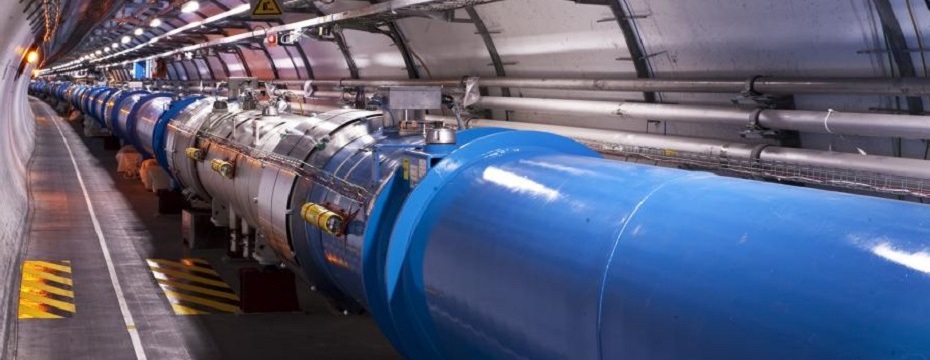


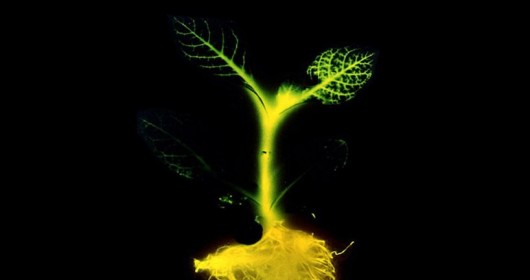

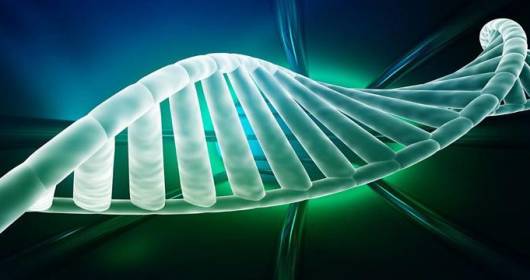
Leave a Reply